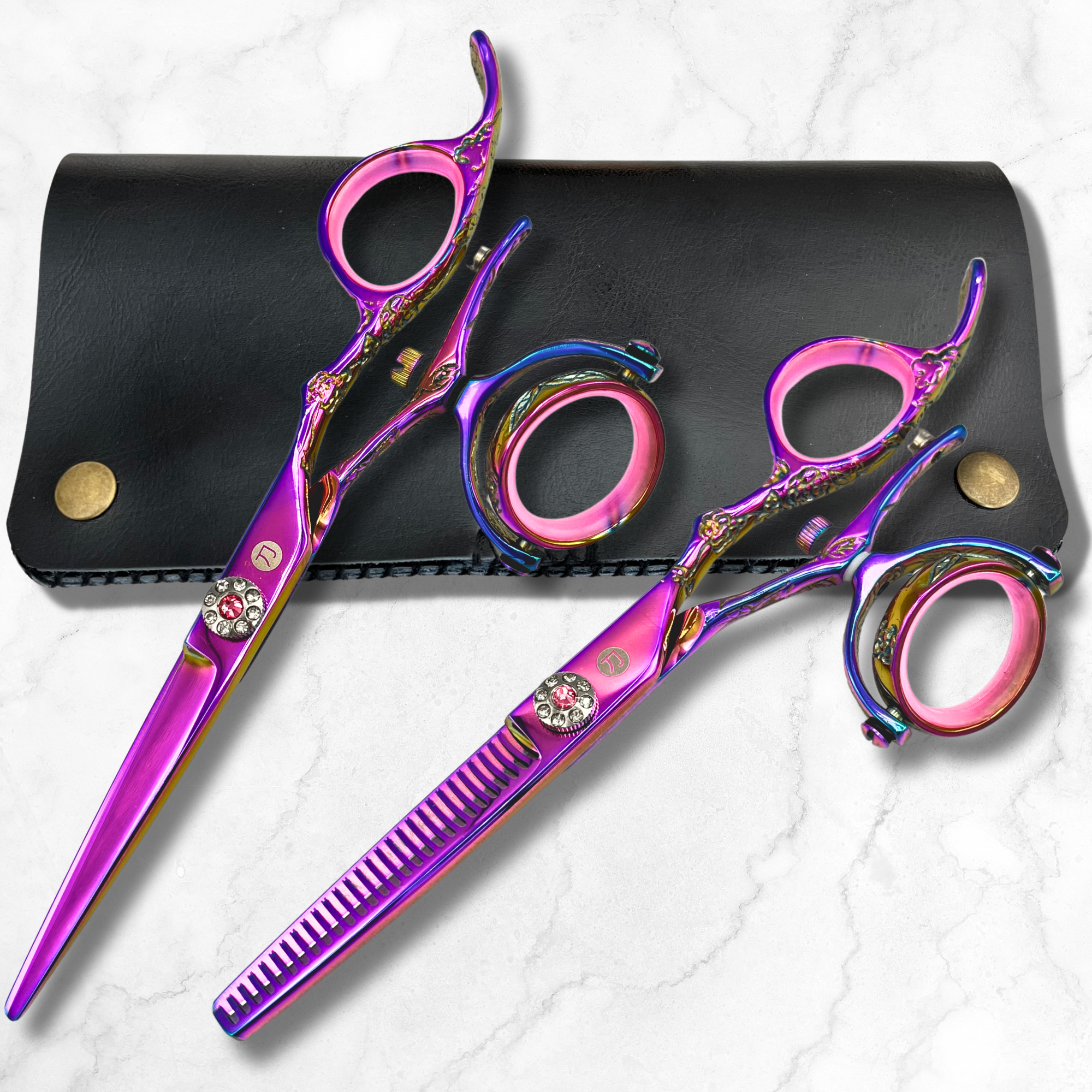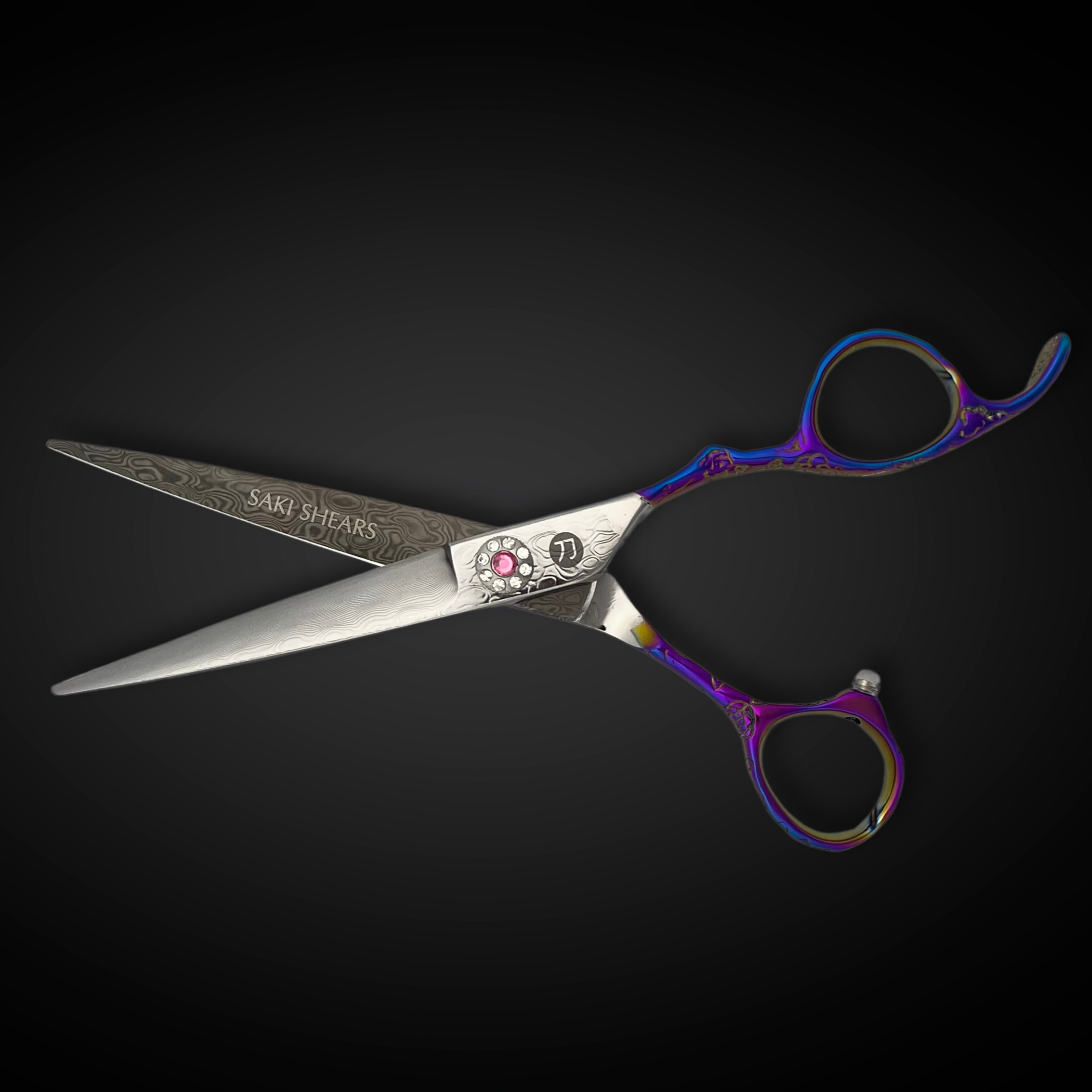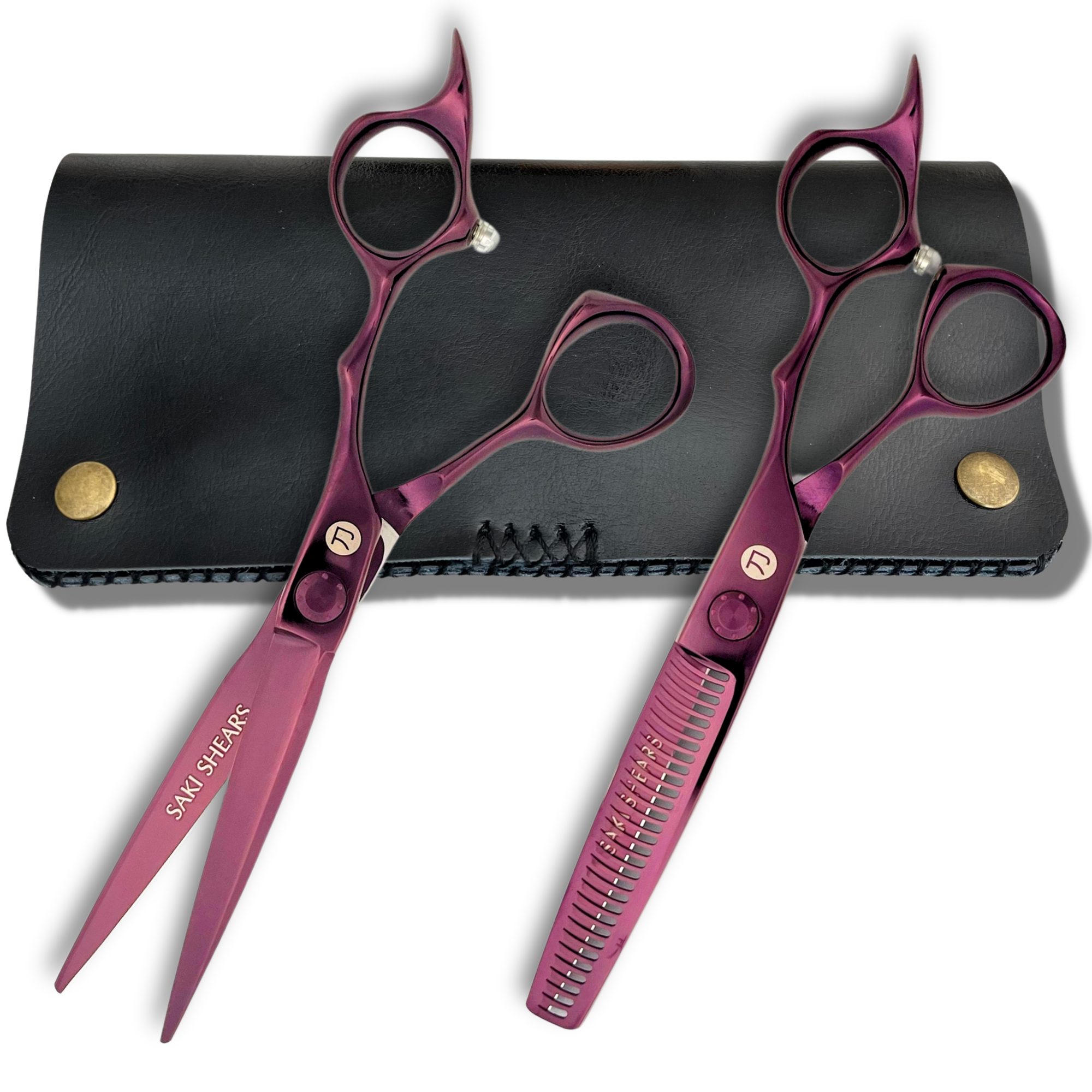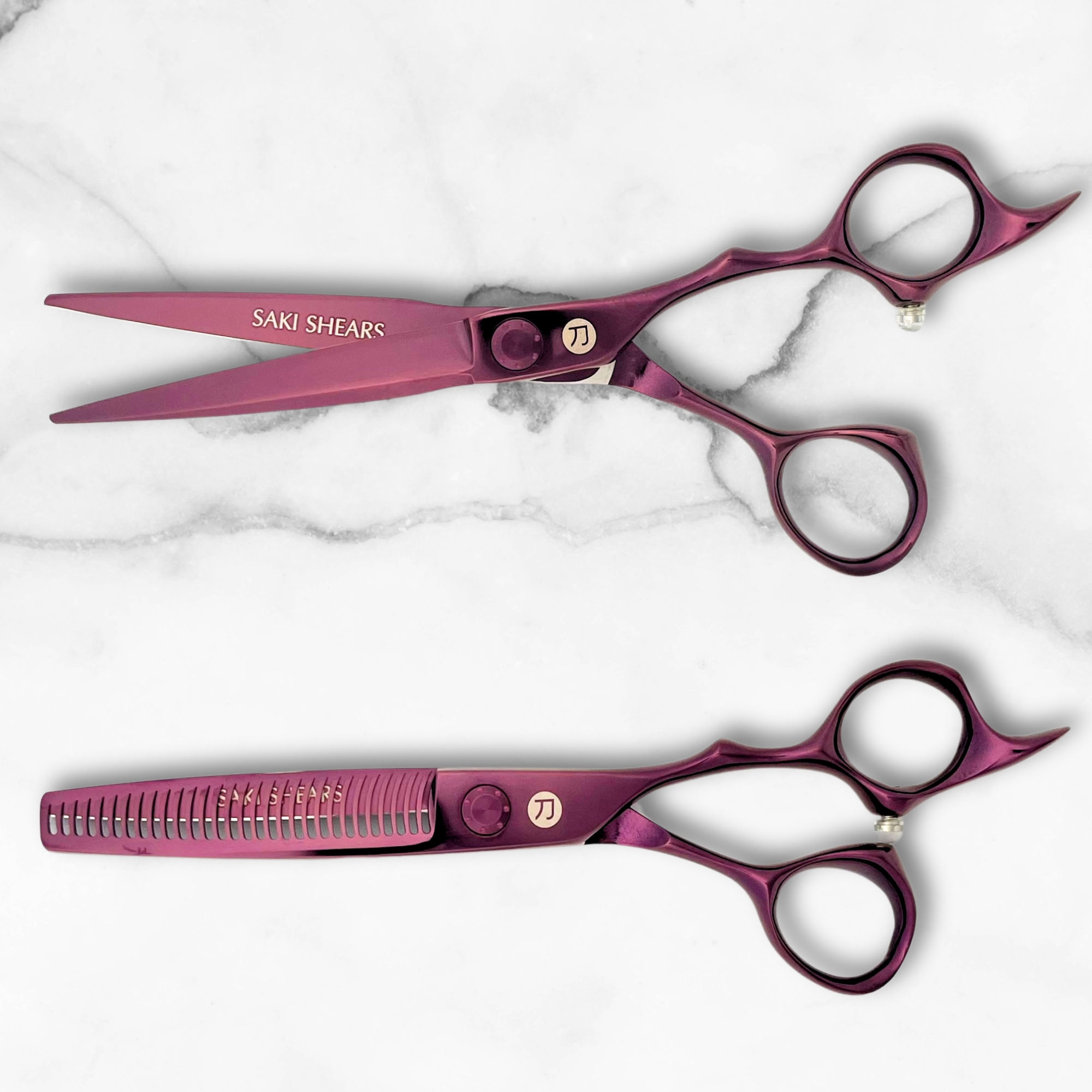Continuing Education: Top Workshops and Courses for Stylists
Continuing education is essential for hairstylists who want to improve their skills, attract more clients, and boost their earnings. Studies show salons that prioritize staff training see a 37% increase in client retention. This article highlights top workshops and courses that cover:
- Advanced styling techniques like precision cutting and balayage.
- Business skills such as budgeting, marketing, and team management.
- Eco-friendly practices to meet rising demand for sustainable salons.
Quick Overview of Featured Programs:
| Program Name | Focus Areas | Cost Range | Format Options |
|---|---|---|---|
| Sassoon Academy Cutting Course | Precision cutting, styling techniques | $190+/year | In-person, online |
| HCDS4You Business Training | Salon management, marketing, finances | $500-$5,000 | In-person, online, hybrid |
| TrainersPlaybook.com | Technical skills, client relations | $39.99-$399.99 | Online, interactive |
| Pivot Point Academy | Cutting, coloring, salon management | Varies | Online, VR, hybrid |
| Paul Mitchell Barber Training | Barbering techniques, business skills | $14,000-$22,000 | In-person, hybrid |
| Eco-Friendly Salon Methods | Sustainable practices, waste reduction | Varies | Online, in-salon |
Whether you’re looking to master cutting-edge techniques, grow your business, or adopt green practices, these courses can help you stay competitive in a fast-evolving industry. Ready to take the next step in your career? Let’s dive in!
Become a Certified Hair Stylist! Online Makeup Academy Hair Styling Course
1. Sassoon Academy Advanced Cutting Course
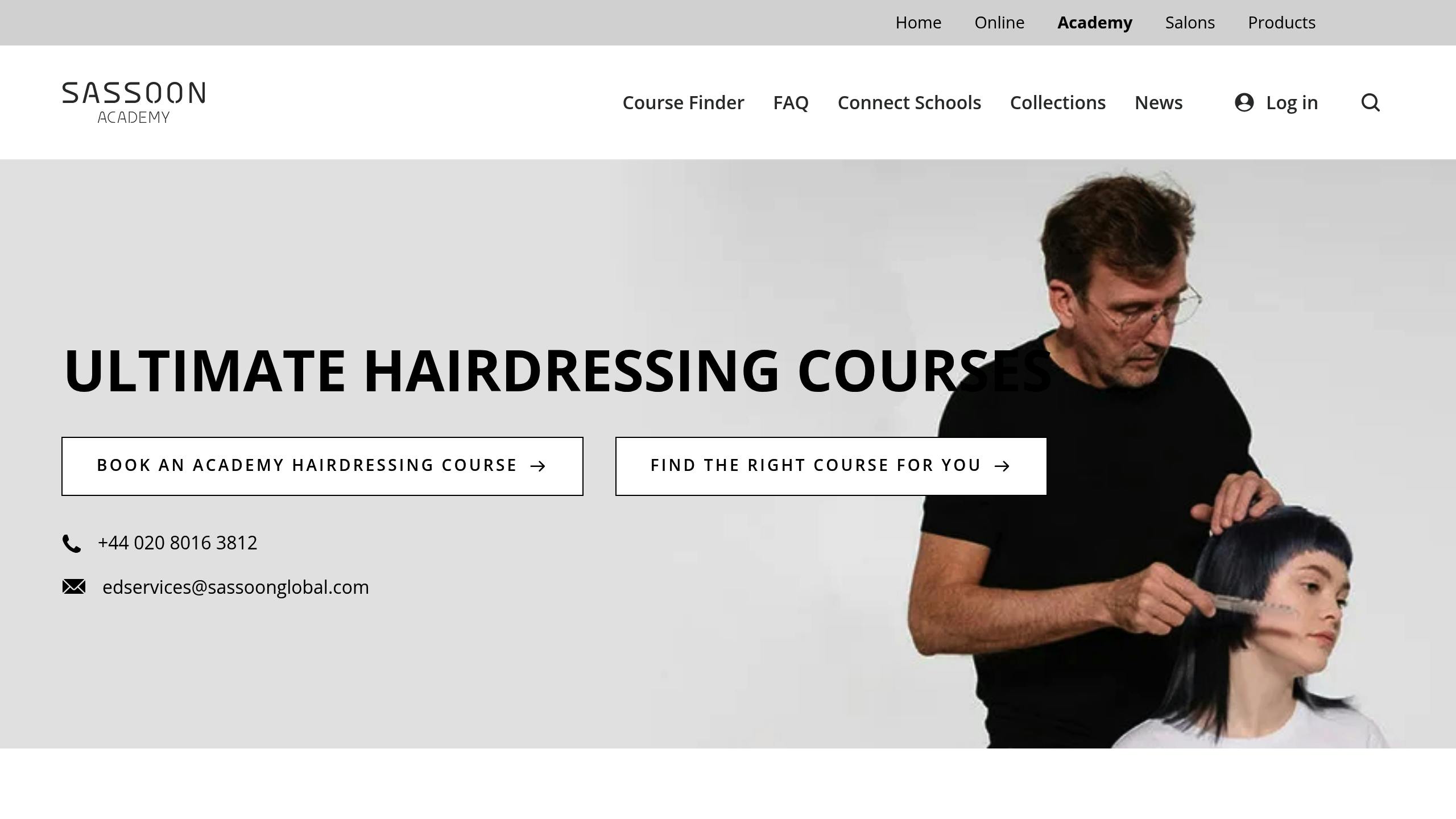
The Sassoon Academy Advanced Cutting Course is a key program for hairstylists looking to refine their skills and elevate their craft .
Skills Covered
This course focuses on precision cutting techniques, emphasizing three main areas:
- Advanced line work and graduation methods
- Styling techniques for both men and women
- Adaptable approaches for various hair types
Participants gain a deep understanding of geometric cutting, tailored to different face shapes and hair textures.
Class Formats
| Duration | Features |
|---|---|
| 5 days | Hands-on, in-person training |
| Self-paced | Online learning options |
| Flexible | Customized salon-based sessions |
Practical Training
The course emphasizes hands-on learning through mannequin practice, live model sessions with real-time instructor feedback, and small-group workshops.
"The courses took my understanding of precision hair cutting techniques to a different level. After completing the ABC Cut course, I saw a 30% increase in my male clientele", says Nathan Tonge, a 2023 graduate from Greenmount, UK .
This practical focus aligns with the goal of improving client retention and satisfaction.
Applicants should have foundational skills, such as Level 2 NVQ or an equivalent qualification . Pricing starts at $190.00/year for the ABC+ Pack online course .
2. HCDS4You Business Management Training
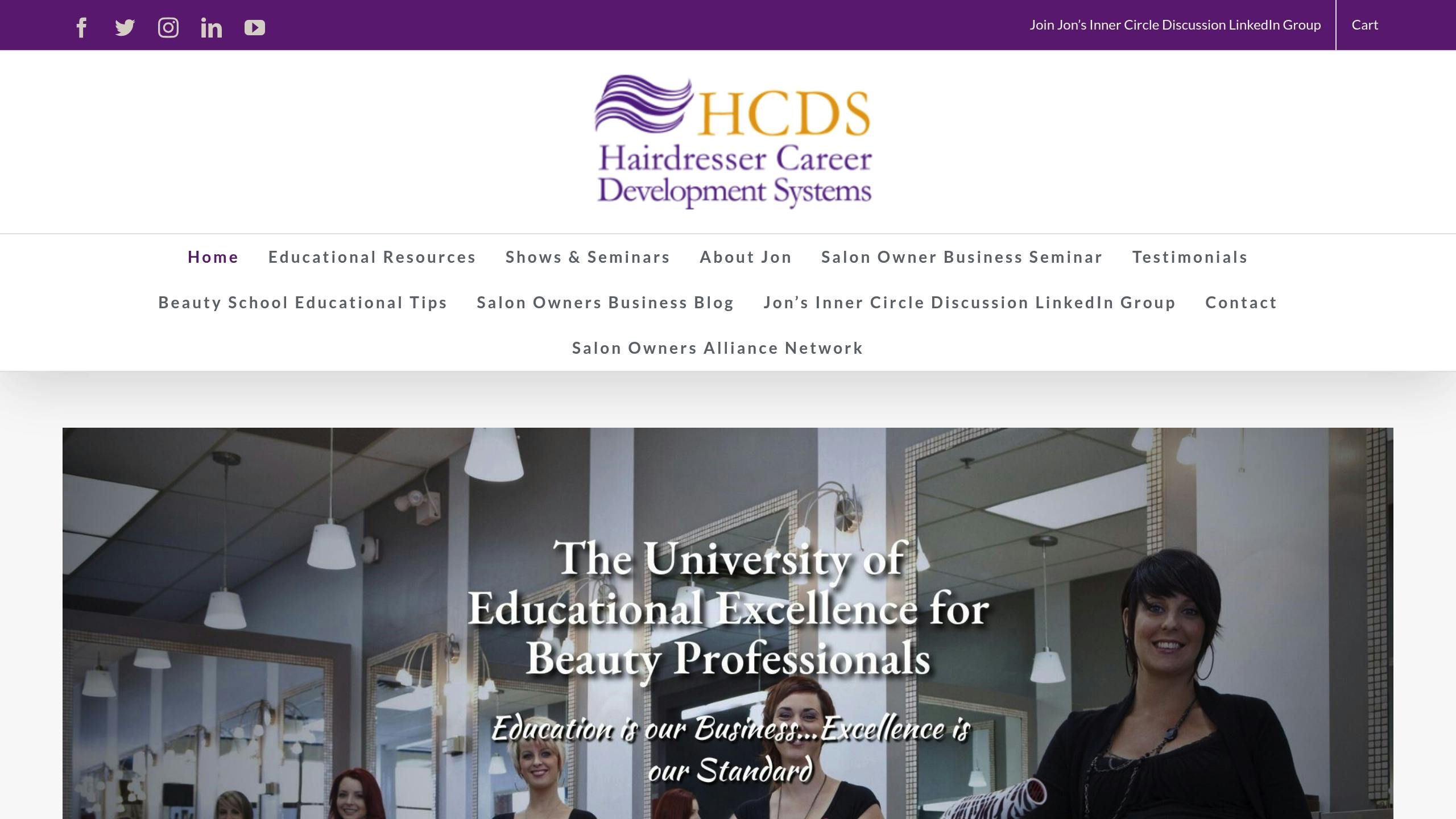
Technical skills might make a stylist great at their craft, but understanding business is what drives long-term success. That’s where HCDS4You steps in with its specialized training programs.
Program Track Record
With over 35 years of experience, HCDS4You has trained more than 50,000 stylists. Their programs directly address the business knowledge gap, as seen in the 37% client retention statistic mentioned earlier.
Skills Taught
This program focuses on key business skills tailored specifically for salons:
| Business Area | Topics Covered |
|---|---|
| Financial Management | Budgeting, pricing strategies, profit analysis |
| Marketing | Social media, client retention, brand building |
| Operations | Inventory control, workflow improvements |
| Leadership | Team management, staff development, salon culture |
Class Format Options
HCDS4You offers flexible learning options to suit different preferences . Costs range from $500 for short workshops to $5,000 for in-depth programs :
| Format | Duration | Cost |
|---|---|---|
| In-Person Workshops | 2-3 days | $500-$1,000 |
| Online Self-Paced | 6-12 weeks | $2,500-$5,000 |
| Hybrid Programs | Variable | $1,200-$2,000/year |
| One-on-One Coaching | Custom | Starting at $250/hour |
Hands-on Practice Methods
HCDS4You emphasizes practical learning through:
- Working with real salon budget templates
- Creating personalized marketing plans
- Analyzing case studies of successful salons
- Role-playing team management scenarios
Sarah Thompson, owner of Blush Salon in Denver, shared impressive results after applying HCDS4You strategies. Her salon saw a 30% revenue boost and client retention jumped from 65% to 85% in just six months. Additionally, inventory waste was cut by 20% .
Participants must hold an active license and have at least two years of experience . Lifetime access to course materials ensures stylists can adapt to industry changes over time.
3. TrainersPlaybook.com Online Learning

TrainersPlaybook.com blends essential business skills with advanced technical training, offering courses led by industry experts like Redken's Sam Villa and balayage pro Candy Shaw. With over 300 videos across 50+ specialized programs, this platform provides a wide range of resources for career growth .
Program Track Record
The platform showcases lessons from top-tier instructors, including Sam Villa, Redken's Global Artistic Ambassador, and Candy Shaw, a balayage specialist .
Skills Taught
The curriculum emphasizes technical skills and professional growth, covering topics such as:
| Category | Course Topics |
|---|---|
| Technical Skills | Advanced cutting, color theory, balayage techniques, eco-friendly coloring |
| Specialty Services | Bridal styling, men's grooming |
| Client Relations | Consultation strategies, communication techniques |
Class Format Options
TrainersPlaybook.com provides multiple subscription plans to suit different needs:
| Subscription | Cost | Features |
|---|---|---|
| Monthly | $39.99 | Full platform access |
| Annual | $399.99 | Save 17% |
| Single Course | $49-$299 | Focused skill training |
| Salon Packages | Custom pricing | Team-based learning |
Hands-on Practice Methods
The platform integrates practical training with digital tools for a comprehensive learning experience:
-
Virtual Practice Tools
Use AR-powered 3D models on your phone or tablet for skill-building . -
Physical Practice Kits
Select courses include mannequin kits for hands-on application . -
Interactive Learning
- Live-streamed workshops
- Video assignments with personalized feedback
- AR-enhanced practice sessions
This hybrid model offers flexibility while complementing traditional programs like Sassoon Academy, giving users 24/7 access to resources.
4. Pivot Point Academy Digital Classes
For stylists seeking a structured digital learning experience, Pivot Point Academy's LAB platform combines technology with beauty education. Since 2014, it has trained over 100,000 students . With a presence in more than 2,000 schools across 70 countries , this platform builds on 60 years of teaching expertise and has earned multiple industry awards for its forward-thinking approach .
Skills Taught
The platform focuses on key skills that align with the needs of growing a business and staying ahead of trends:
| Skill Category | Key Topics |
|---|---|
| Technical Skills | Precision cutting, texturizing, layering |
| Color Mastery | Color theory and application techniques |
| Business Development | Client communication, salon management |
| Fashion & Trends | Trend forecasting, modern styling |
Class Format Options
The LAB platform offers over 1,000 hours of content through various flexible formats:
| Format Type | Features |
|---|---|
| Self-Paced Courses | Includes video tutorials, interactive quizzes |
| Live Webinars | Real-time interaction with instructors |
| VR Simulations | Virtual environments for cutting practice |
| Hybrid Learning | Mix of online and in-person sessions |
Hands-on Practice Methods
To reinforce learning, the platform provides:
- Virtual cutting tools with instant feedback
- Social groups for discussing techniques
- Modules to track progress and refine skills
5. Paul Mitchell Professional Barber Training
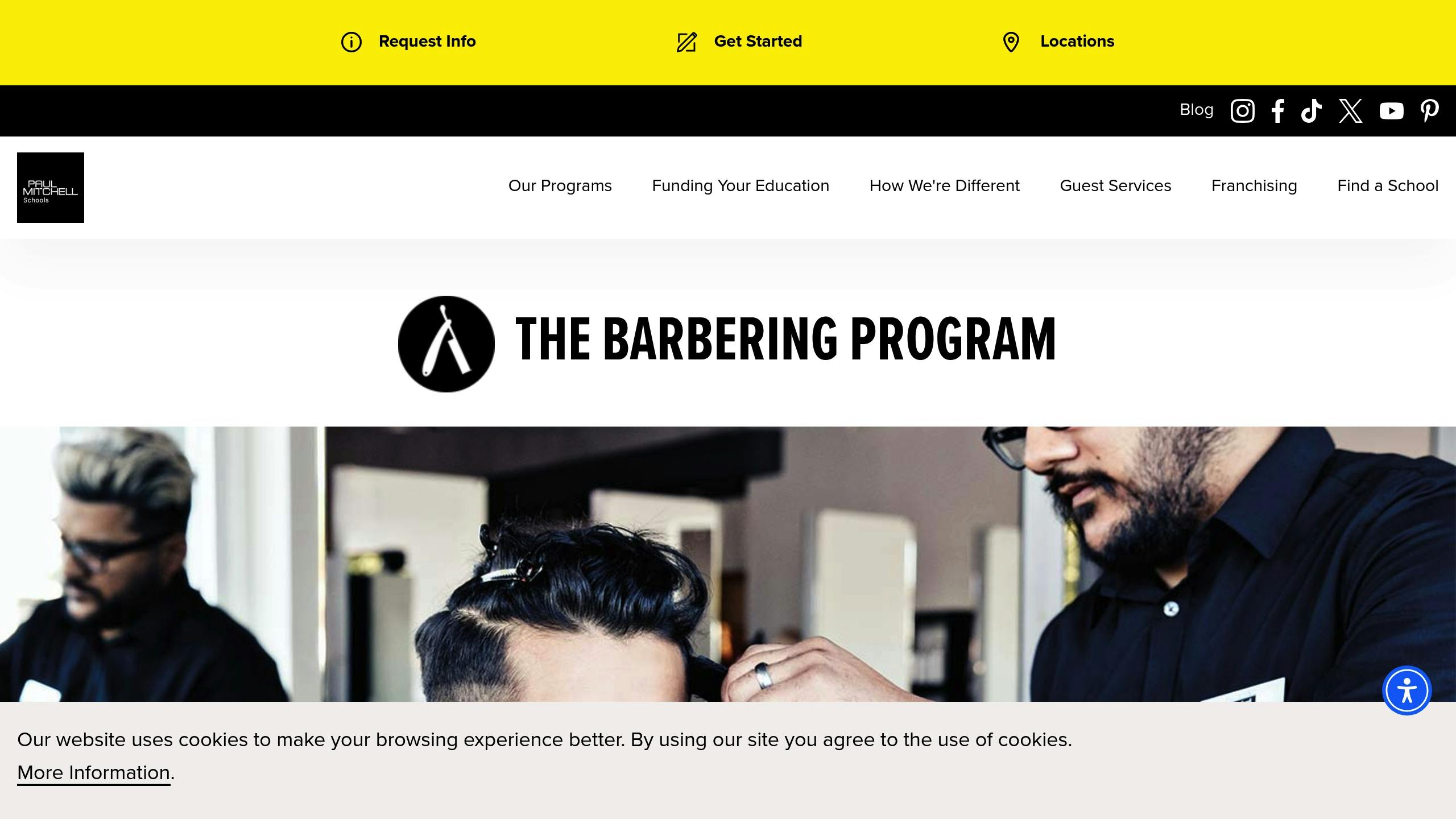
Paul Mitchell's barber training program has built a strong reputation for combining hands-on learning with a structured curriculum, making it a go-to choice for aspiring barbers.
Program Track Record
With over 40 years of experience, Paul Mitchell's barber program spans 1,500 to 1,800 hours over 10 to 15 months. Available through its extensive school network, the program has prepared more than 15,000 barbers for leadership roles in salons since 1985.
Skills Taught
The curriculum blends time-tested techniques with contemporary practices, ensuring students are well-rounded professionals. Here's a breakdown of what you’ll learn:
| Core Area | Skills Covered |
|---|---|
| Classic Techniques | Precision cutting, straight razor shaving, beard grooming |
| Modern Methods | Hair tattoo designs, contemporary styling |
| Color & Treatment | Men's hair coloring, highlighting, scalp treatments |
| Business Skills | Pricing strategies tied to revenue optimization methods |
Class Format Options
Paul Mitchell offers a variety of training formats to cater to different schedules and learning styles:
| Format | Details |
|---|---|
| Full-Time Immersion | Daily intensive workshops with hands-on practice |
| Part-Time | Evening and weekend classes for busy professionals |
| Hybrid Learning | Online theory paired with in-person practice |
| Advanced Workshops | Focused training on ethnic hair and vintage techniques |
Hands-on Practice Methods
Practical experience is a cornerstone of the program. Students receive a professional barbering kit and follow a structured approach to build their skills:
- Start with mannequins before moving on to live models in a salon-like setting.
- Participate in supervised sessions led by expert instructors.
- Engage in timed challenges to improve speed and precision.
- Take part in peer reviews to refine techniques and gain feedback.
Tuition costs range between $14,000 and $22,000. This hands-on approach is complemented by career support, mentoring, and access to advanced education opportunities, ensuring students are well-prepared for the industry.
6. Eco-Friendly Salon Methods Course
While mastering technical skills is crucial, Section 6 shifts focus to meet the rising demand for sustainable beauty practices.
Program Track Record
The Green Circle Salons certification program has become a leading eco-focused training initiative in North America. In 2022 alone, over 16,000 professionals trained through the program helped divert more than 1 million pounds of beauty waste from landfills .
Skills Taught
This program emphasizes four key areas:
- Water conservation: Techniques like dry-cutting and recycling systems.
- Energy efficiency: Smarter use of tools to reduce energy consumption.
- Waste management: Safe disposal of chemicals to minimize environmental impact.
- Natural products: Application methods for organic and sustainable beauty solutions.
Class Format Options
| Format Type | Duration |
|---|---|
| Online | 6-8 weeks |
| In-Salon Training | 2-3 days |
| Certification Track | 16 weeks |
Hands-on Practice Methods
Students get practical experience using:
- Low-flow faucets and water-saving washing systems.
- Organic color formulations.
- Waste sorting and recycling systems.
- Tools for monitoring energy usage.
The program delivers clear, measurable outcomes. Member salons have reported substantial reductions in waste , which aligns with earlier discussions on retaining eco-conscious clients. Participants also learn to evaluate the financial benefits of green upgrades and develop marketing strategies to promote sustainable services, enhancing their career prospects .
"Our member salons have reported an average 85-95% reduction in their waste output, proving that eco-friendly practices can have a significant impact on both the environment and business operations." - Green Circle Salons Annual Impact Report, 2022
Online vs In-Person Training Options
Hairstylist education offers two main paths, each with its own pros and cons. As discussed in Section 6, where eco-friendly practices are becoming a key career factor, access to training is just as important. Modern stylists need to think about what works best for their needs.
Cost Differences
Online courses are usually more affordable, ranging from $50 to $500, compared to in-person programs that often cost $2,500 or more for week-long intensives.
Scheduling and Flexibility
In-person classes require a set time commitment, often spanning several days or weeks. On the other hand, online courses let you learn at your own pace, sometimes offering access to materials for up to a year. This flexibility is a huge plus for those balancing work or other commitments.
Hands-On Learning and Feedback
One of the biggest strengths of in-person training is the hands-on experience. Instructors can demonstrate techniques directly and provide immediate feedback. While online platforms use tools like VR to show techniques, they can’t fully replace the value of real-time, physical corrections. Research highlights that e-learning can improve retention rates (25-60%) compared to in-person formats (8-10%), but mastering technical skills still requires physical practice.
Certification and Industry Standards
Whether online or in-person, certifications from accredited programs are equally respected when they meet industry standards.
Building Connections
In-person training naturally fosters networking through face-to-face interactions with peers and instructors. Online platforms try to bridge this gap with virtual communities and live Q&A sessions, but maintaining these connections often takes more effort.
Staying Current with Trends
Online platforms have the edge when it comes to quickly updating content to reflect new trends and techniques. In contrast, in-person programs may take longer to adapt but often feature instruction from top industry professionals who are shaping these trends.
Choosing between online and in-person training boils down to your learning style, schedule, and career goals. A growing number of stylists are turning to a mix of both, combining the flexibility and depth of online learning with the practical experience of in-person workshops. This approach can help them stay competitive in areas like digital trends (Section 3) and eco-friendly services (Section 6).
Conclusion
Pursuing professional hairstyling education can open doors to new career opportunities. According to data, stylists who consistently update their skills earn 15% more on average compared to those who don't.
When planning your educational path, consider these strategies to align with your career goals:
- Focus on programs that directly support your professional growth.
- Combine online and in-person learning options for flexibility and effectiveness.
- Set clear goals for applying new techniques in your work.
The numbers back this up: 92% of salon owners believe ongoing education is essential for their team's success, which also plays a role in the 37% increase in client retention noted earlier.
Looking ahead, hairstyling education is increasingly shaped by eco-friendly practices like those championed by Green Circle Salons, along with digital tools and personalized learning approaches. By prioritizing your growth, you're not just building a stronger career - you’re also contributing to a more sustainable future for the industry.

